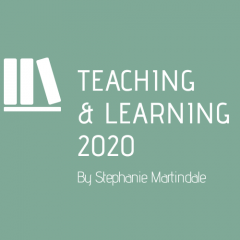It’s been a fair while (almost 6 years) since I completed my undergrad studies at UAL. As a now late twenty-something year old with a business and a child (certainly two of the most time consuming things to ever exist), I never imagined that I would become a student again. The level of stress and anxiety that presented itself in the weeks before a deadline date was a certain deterrent for me to ever think about continuing studies beyond undergrad level – yet here we are. Its 2020 and I’m a post-grad student. Here is a summary of my current thoughts about being a student again:

I have a lot of conflicting feelings presenting themselves already and it’s only week 2. I think this stems from my innate desire to excel at any task I assume vs. the idea of trying to juggle student/teacher life with my already time restricted lifestyle; the former requires more time and commitment than I potentially have to give but I am determined to make it work!
I was the first person in my family to ever graduate from University. This was an obviously incredible milestone to reach in my life, but had I been just one year younger in age, I potentially may have never even enrolled. There’s a wealth of reasons why, but I would say that the increase in student fees in 2012 as a result of the Browne Review (2010) was a pivotal factor in my decision; I began my BSc undergrad study in 2011 when fees were around £3.2k, thus narrowly missing the tripled cost of studying at university that would have most definitely bound me into a lifetime of colossal student debt repayments.
We discussed these changes to student fees in in this week’s lecture, in the broader context of the Higher Education (HE) timeline of events and influences in the UK since the 1950’s (see image 2). This particular event (fee increases) had a profound effect on my entire decision to attend university. Coming from a working class background, we were money-poor however I was always conscious about saving money while simultaneously getting the best value. My thoughts were – do I go now and save money while getting my degree or do I go later on in life (post 2012) and pay triple? The answer was obvious and I enrolled with pride in 2011.

As an undergrad, I was also exposed to the emergence of new advances impacting the field of HE, the main one being the introduction of new teaching/learning platforms such as Moodle. I was resistant at first, but quickly got used to it (without choice). Fast forward to 2020, it has become clear very quickly that Moodle is a digital learning hub that is fundamental to navigating all PG Cert course units, briefs and assignments. This is also true for other platforms such as MyBlogs and Workflow and it is interesting for me to see the shift in using these as fundamental tools in teaching methods vs. the way they were used less dependently during my first stint in HE.
After this week’s lecture, I have a better understanding of how these digital platforms and tools can be integrated effectively into teaching methods. For example, the session plan created by Lindsay encouraged active participation by using GoogleDocs and Padlet during group discussions and brainstorming. This creates a learning space that facilitates the sharing of information and ideas that is instantly accessible even outside of the class session. It excites me that these platforms not only allow learning content to be developed and shared but it also enhances students’ learning experience bringing a mutual benefit to both student and teacher; I plan to develop and refine my own teaching practice to utilise some of these virtual learning tools alongside range of teaching methods to keep my lessons varied and create an engaging learning environment.
References:
Browne Review (2010), ‘Securing A Sustainable Future for Higher Education: An Independent Review of Higher Education, Funding & Student Finance’, Available at: https://assets.publishing.service.gov.uk/government/uploads/system/uploads/attachment_data/file/422565/bis-10-1208-securing-sustainable-higher-education-browne-report.pdf (Accessed: 19 Jan. 2020)

Hi there – well done for adding your first entries to your Teaching and Learning blog, which I’ve really enjoyed reading. Reflecting on our own experience of education is very important when thinking about our teaching approaches and you have linked your own experience as a student to what you might do in the studio / classroom (for example with the use of technologies) in a very successful way. I look forward to reading more!
Hi Emily, thanks so much for swift feedback! I’m glad you enjoyed the read.